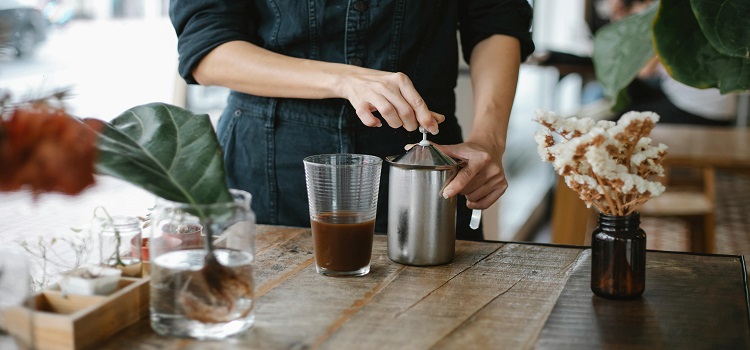As an Amazon Associate I earn from qualifying purchases.
Mastering the Art of Blending Food Without a Blender
Introduction:
Blending food is a fundamental culinary technique that allows you to create smooth textures and combine flavors seamlessly. While blenders are commonly used for this purpose, you may find yourself without one at times. Fear not! In this guide, we’ll explore alternative methods for blending food without a blender, using simple kitchen tools and techniques.

Section 1: Mashing and Smashing
One of the simplest ways to blend food without a blender is by using basic kitchen tools to mash and smash ingredients. Here’s how:
- Potato Masher: Use a potato masher to mash soft fruits, vegetables, or cooked beans into a smooth consistency.
- Fork or Spoon: For smaller quantities or finer textures, use a fork or spoon to mash ingredients directly in a bowl or on a cutting board.
- Immersion Blender: While technically a blending tool, an immersion blender can be used similarly to a potato masher for small batches of food.
Section 2: Chopping and Mixing
If you don’t have a blender, chopping and mixing ingredients finely can help achieve a blended-like consistency. Try these methods:
- Knife and Cutting Board: Finely chop ingredients into small pieces, then use a knife to mince them further until they reach a smooth texture.
- Food Processor: While not the same as a blender, a food processor can also be used to chop and mix ingredients finely, similar to blending.
Section 3: Straining and Pressing
For certain ingredients, straining and pressing can help extract liquids and create a smoother texture. Here’s how:
- Fine Mesh Sieve: Strain cooked vegetables or fruits through a fine mesh sieve, pressing them with a spoon or spatula to extract the juices and pulp.
- Cheesecloth or Nut Milk Bag: Use cheesecloth or a nut milk bag to strain liquids from blended ingredients, pressing them to release excess moisture and achieve a smoother consistency.
Section 4: Frequently Asked Questions (FAQ)
- Can I use a food processor instead of a blender?
- Yes, a food processor can be used as an alternative to a blender for chopping, mixing, and blending ingredients, although the texture may differ slightly.
- What can I use instead of a blender for smoothies?
- In addition to mashing and chopping methods, you can also use a handheld immersion blender or a manual hand-crank blender for making smoothies.
- How can I blend frozen fruit without a blender?
- Allow frozen fruit to thaw slightly, then use a fork or potato masher to mash it into a smooth consistency. Alternatively, chop the fruit into small pieces and mix with other ingredients.
- Is it possible to blend ice without a blender?
- Blending ice without a blender can be challenging, but you can crush ice using a mallet or rolling pin and then finely chop it with a knife or masher.
- Can I use a mortar and pestle for blending food?
- Yes, a mortar and pestle can be used to grind and blend ingredients into a smooth paste or sauce, although it may require more effort and time compared to using a blender.
- What is the best way to blend dry ingredients without a blender?
- For dry ingredients like spices or nuts, use a mortar and pestle or a spice grinder to grind them into a fine powder.
- Can I use a hand mixer for blending food?
- While a hand mixer can be used for mixing and whipping ingredients, it may not achieve the same level of smoothness as a blender for blending ingredients into a puree or sauce.
- How can I blend soup without a blender?
- Use a potato masher or fork to mash cooked vegetables directly in the pot, or strain the soup through a fine mesh sieve and press the solids to extract the liquid.
- What is the best method for blending avocado without a blender?
- Mash ripe avocado with a fork or potato masher until smooth, or blend it with other ingredients using a mortar and pestle for a creamy texture.
- Can I use a hand whisk for blending food?
- While a hand whisk can be used for mixing and incorporating ingredients, it may not achieve the same level of smoothness as a blender for blending food into a homogeneous mixture.
Conclusion:
Blending food without a blender is entirely feasible with a bit of creativity and the right techniques. Whether you’re mashing, chopping, straining, or pressing, these alternative methods allow you to achieve smooth textures and blend flavors seamlessly using basic kitchen tools. With these tips and tricks, you’ll be able to whip up delicious blended creations even without a blender on hand. Happy blending!
As an Amazon Associate I earn from qualifying purchases.
Leave a Reply